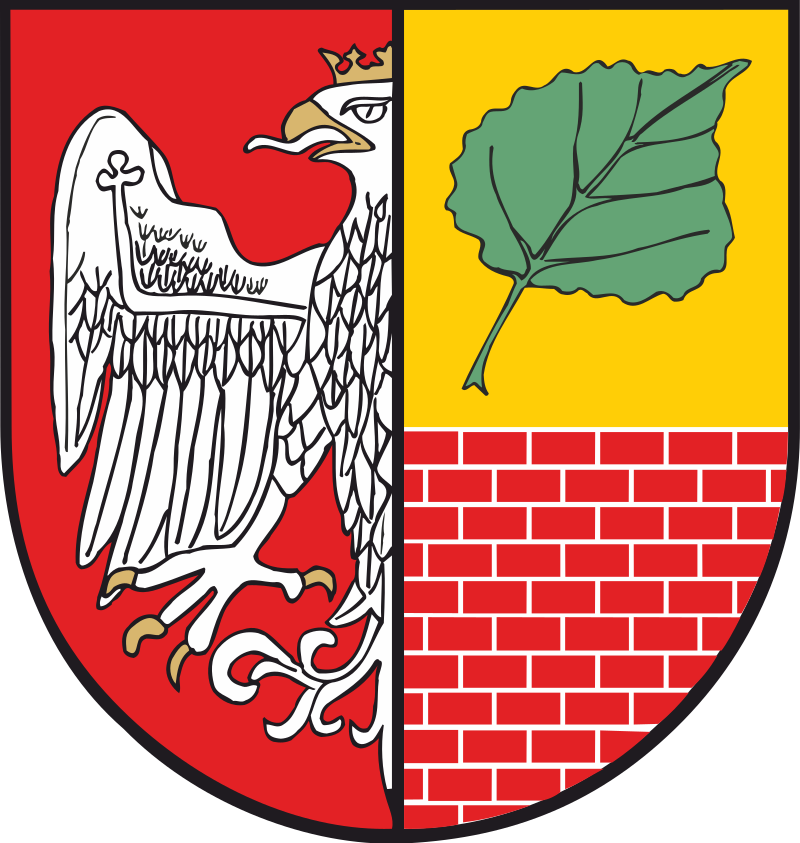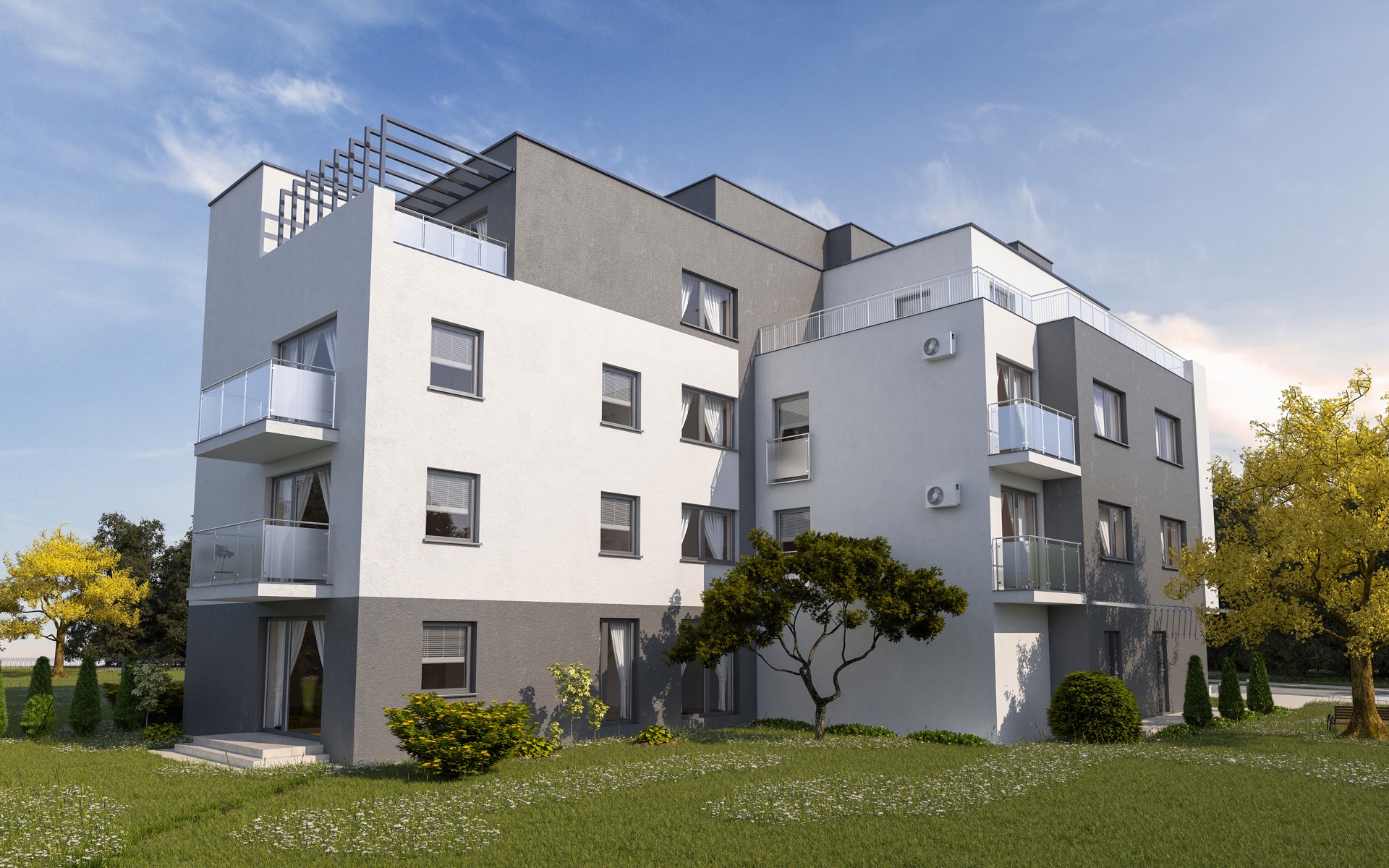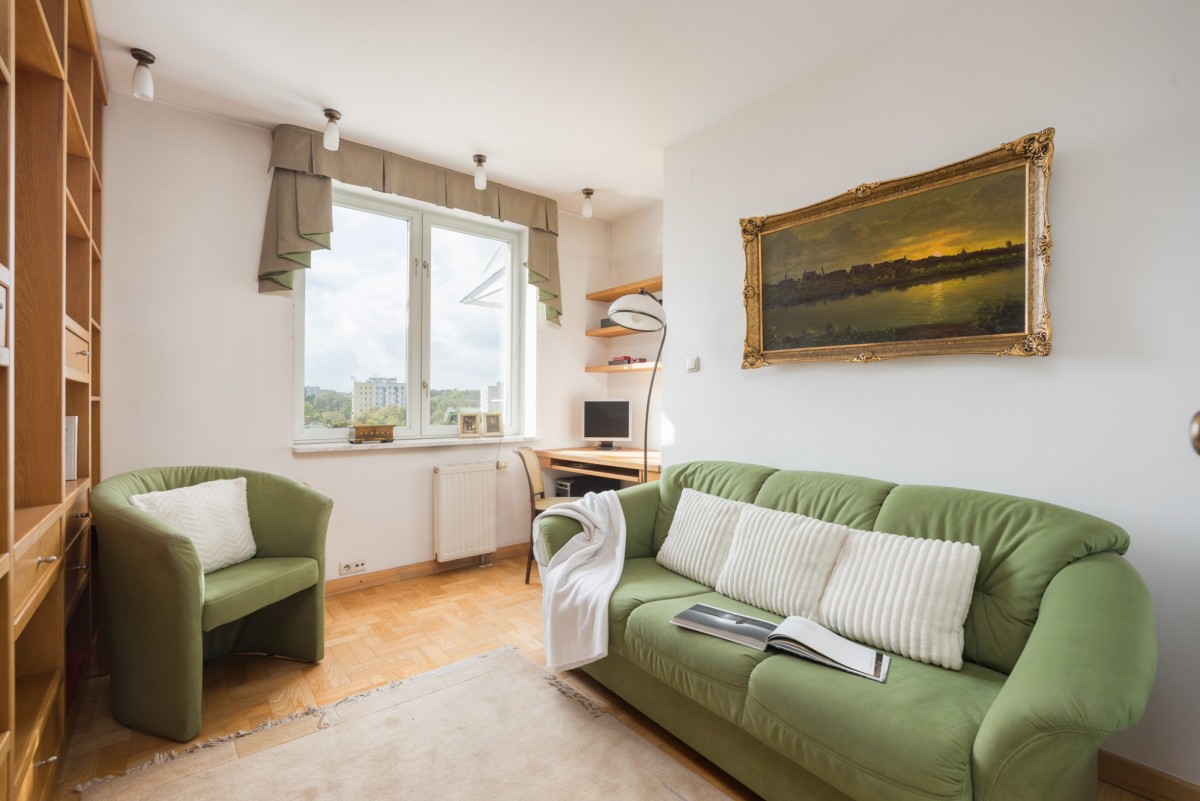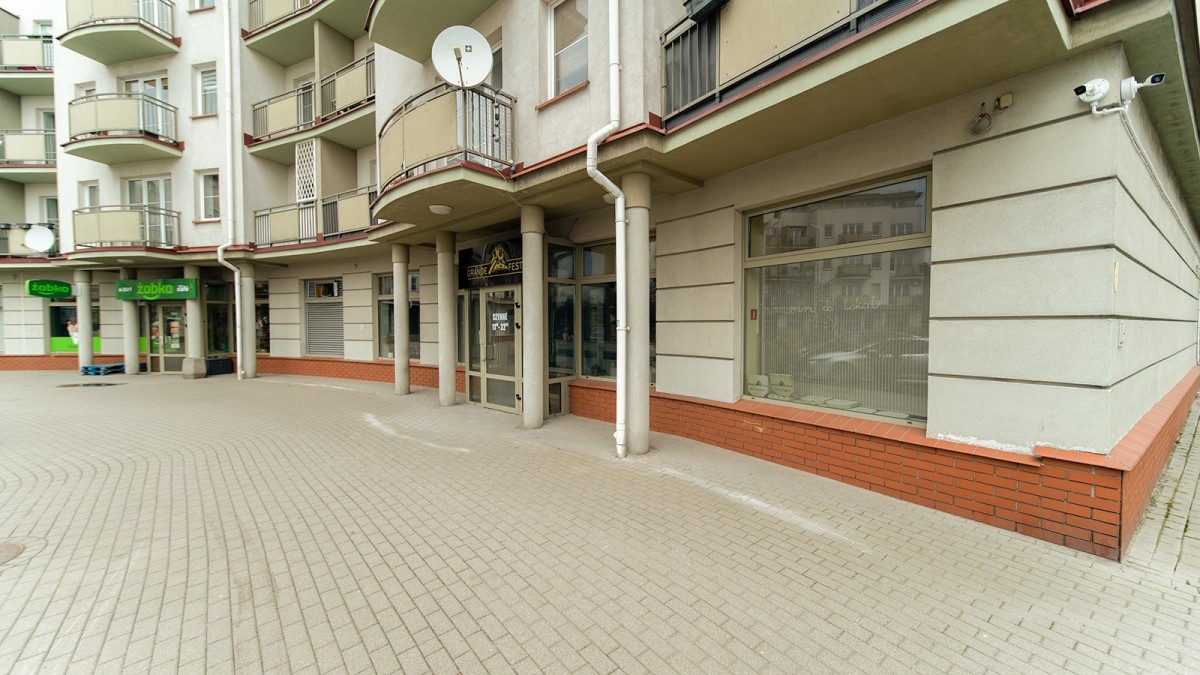Ząbki

Total information
Ząbki is a city in Poland, part of the Masovian Voivodeship, Wołomin County. It is part of the Warsaw agglomeration. The city of Ząbki is located in the northeast of the capital at a distance of only 10 km.
Population 44,325 (end 2021). Ząbki is the fastest growing city in Poland. Due to the proximity of the capital and relatively inexpensive real estate in comparison with Warsaw, the population growth in the city is growing from year to year, and in connection with this, its infrastructure is also improving.
It has the status of a city commune.
It occupies an area of 11.13 km², including 25.8% of forest land. The total forest area is 284 hectares. The city makes up 1.2% of the area of the district.
Telephone code: +48 22. Postal code: 05-091. Car code: WWL. Coordinates: 52°17′34″N 21°06′58″E
Story
The primary name of the city was Volya Zombkova, but the history of the settlement itself began in the 16th century. The village was founded by the decision of King Sigismund I the Old on October 13, 1533. Historical sources mention that the royal village of Volya Zombkova was located on sandy marshy ground on the edge of the Slupecka Forest. 15 peasants lived here, who worked on the Brudno farm 3 days a week for "panshchina", paid tithes and had a number of other duties.
The Royal Village Wola Ząbkowá was located in the Warsaw District of the Warsaw Land of the Masovian Voivodeship. In 1580 Wola Ząbkow changed the name to Ząbki. The Zombies were owned by the Plater family. In 1635, Ząbki suffered from a large flood caused by the Vistula flood.
More favorable conditions for life in Ząbki appeared in the 17th and 18th centuries, which was facilitated by the major economic and social changes of the Enlightenment and the rapid development of Warsaw at that time. In 1795, as a result of the third redistribution of the lands of Poland, Ząbki became part of Prussia.
Further development of the village took place in the first half of the 19th century. Improved at this time and transport links with Warsaw. According to data from 1827, Ząbki had 36 houses and 206 inhabitants. In the 80s of the 19th century, the population increased to 600 people. Zombies at that time were part of the lands of the Count Roniker family. During the November uprising, many Polish units were stationed in the territory of Zombek under the command of General Josef Chlopicki. Zombie was also the rear for the Battle of Olszynka Grochowska. A monument was erected at the site of the battle.
At the end of the 19th century, Count Roniker built two brick factories and a narrow gauge railway towards Brudno in Ząbki, which increased the level of employment. In 1862, the Warsaw-Petersburg Railway was launched, which caused an influx of people and an upsurge in the economy. In the same year, the first school was opened. In 1903, at the initiative of the Warsaw Society for Medical Assistance and Care for the Mentally Ill, a psychiatric hospital was opened in the village of Drewnitsa, which still functions to this day.
In 1912, part of the property of Count Roniker was divided and the creation of a garden city began. This urban idea was only partially realized. After World War I, the Drevnitsa Forest Inspectorate was established.
In the interwar period, brick construction was revived on the basis of local brick factories. Several objects of historical value have survived to this day. Villas built for General Sikorski, General Sosnkowski, Vice-President of Warsaw M. Jankowski and many other figures, including from the world of culture.
In 1918, the construction of the first wooden church in Ząbki was completed and a parish was founded.
In 1920, a hospital was established on the territory of Zombek for the wounded participants in the battle of Osov.
In 1925, due to frequent fires in Ząbki, a Volunteer Fire Brigade was established.
In 1927 the sports club "Zombkovya" was founded.
In the late 1930s, Ząbki had 3,000 inhabitants.
In 1934, a postal agency began work.
In 1935, Zombok was supplied with electricity.
From September 14, 1939 to September 13, 1944, the German occupation of Zombok lasted. Residents actively participated in the fight against the invaders. World War II interrupted the construction of the school and the parish church.
After the war, Zombies were further developed.
In 1950, the Health Center was established.
In 1952-1954 the commune of Ząbki was located in the village.
In 1956 Ząbki became a settlement.
In 1962, elementary school No. 2 was opened with a large sports hall.
In 1967 Ząbki received city status. The city continued to develop and the number of inhabitants increased.
After 1969, the first apartment buildings were built in the area of Stefan Batory and Voyska Polski streets. In addition to new apartment buildings, the construction of individual housing has begun.
In 1975–1998, the city administratively belonged to the Warsaw Voivodeship.
Garden city
A garden city, located among greenery and correctly performing the function of housing, work and recreation, in the appropriate spatial and architectural framework. This idea appeared at the beginning of the last century in Anglia, she also settled in Poland. Its complete implementation, adapted to local conditions, was the Ząbki Garden City project of 1912 by architect Tadeusz Tolwiński.
The north-south axis, perpendicular to the railway tracks, is in the center of the urban composition. The center of the planning was occupied by a rectangular market square, on which all administrative, social and commercial functions were supposed to be concentrated. A church, a school, a kindergarten and sports grounds are planned in the southern part of the axis. On the north side, near the railroad tracks, a semicircular square was planned, from which symmetrically located streets were supposed to diverge radially.
In a separate recreational part of the city, along a promenade lined with a double row of lindens, Tolvinsky designed the so-called casino, with a modern social program - a large concert and theater hall, a cinema, a library, an exhibition hall and a billiard room, a restaurant and a cafe.
The city was designed for 8,000 inhabitants, and the projected area was divided into 1,600 building plots and household plots.
Tolvinsky's design was characterized by the beauty of urban dominants and ideal proportions. The layout of the streets referred to classical concepts, and the central market square referred to the traditions of a small Polish town.
Manor villas began to be built even before the outbreak of the First World War. Among many celebrities, famous actress Maria Przybylko-Pototskaya, general Kazimierz Sosnkowski, writer Magdalena Samovanets, Arnold Shifman, Tollotsko and Weichert families lived there.
In the interwar period, the construction of the garden city was continued, but not completed. After the Second World War, as a result of thoughtless fragmentation, the urban layout was destroyed.
The town planning plan of Tadeusz Tolwinsky, even at the stage of the beginning of implementation, which has survived to this day, occupies a prominent place in the history of Polish urban planning and has a high historical value.
City economy
The structure of the Zomok economy is mainly based on private enterprises, which make up 99.43% of all economic entities in the city. The main sectors of activity are freight services, retail and wholesale trade, construction works, information technology services and scientific and technical activities.
According to the data of the Central Statistical Office of Poland for 2013, the city ranks 1st in the powiat (15th in the voivodeship) in terms of the number of entities in the REGON register per 10,000 inhabitants. The unemployment rate is well below the county level.
In 2015, Ząbki became the first city to start lending activities for new and existing enterprises in the SME sector under the Polish Self-Government Programme. Every year, the city authorities organize a thematic meeting with local entrepreneurs. The Praga food exchange operates in the city.
Construction
For many years, the pinnacle of the achievements of modern housing construction in Ząbki were apartment buildings on the street. Batory and Konopnitskaya. The situation began to change in the mid-1990s.
There were many places in Ząbki suitable for this type of construction. The first investments were related to the development of the northern part of the city and the construction of the Makro hypermarket.
At the same time, the residential complex Kosynierów was founded. Then new residential areas, interesting from an architectural point of view, began to be built in other parts of the city. Modern apartments in the immediate vicinity of the capital have attracted new residents. Zombies began to change.
According to the plan of the designers and the city authorities, the area around Tretsego Maya and Orel streets, located near the railway station, was to become the place where the real center of Zombok would be built. Until now, there was no place in the city where cultural and social life would be concentrated.
The residential complex Pasaż "Orla" was built with a view to the future. It has parking for several hundred cars.
From the very beginning, in addition to the trade and service center, the passage housed the new premises of the City Cultural Center and two halls adapted for exhibitions, concerts and film screenings. Since 2006, the passage has housed the city library.
Currently, many new modern residential complexes are being built in Zomki.
Cty budget
In 2014, the city's revenues amounted to PLN 116 million, with expenditures of PLN 109.8 million. According to the data of the Central Statistical Office, Ząbki ranks first in the powiat in terms of their own revenues to the gmina budget. Own revenues accounted for 67.5% of the commune's total budget revenue. The share of income from personal income tax in own income amounted to 43.8%.
Infrastructure and transport
In recent years, the Ząbki commune has become one of the national leaders in receiving and using EU funds for the development and modernization of cities in Poland. According to the data of the Central Statistical Office for 2013, Ząbki received EU funds in the amount of more than PLN 60 million for the development of investments. In the same year, 99.6% of capital expenditures in mmune was directed for investment purposes. Capital investments accounted for 34.4% of the total city budget expenditures. In 2012, the city of Ząbki received three LEADER PRO WM statuettes for the development of Mazovia.
Road infrastructure
Voivodship road No. 629 passes through the city in the direction of Warsaw - Ząbki - Marki and the following voivodship roads intersect:
631 direction Warsaw - Ząbki - Nowy Dwór Mazowiecki, 634 direction Warsaw - Ząbki - Tłuszcz. Road E67 S8 runs along the border.
About 9 km of public roads have been built or upgraded in the city with money received by the local government from EU funds. There are 11 km of cycle paths in Ząbki. The transit tunnel in Ząbki is one of the largest completed road projects in the Volominsky district. The investments were realized thanks to the co-financing of the European Union within the framework of the European Regional Development Fund within the framework of the Regional Operational Program of the Masovian Voivodeship for 2007-2012.
Railway transport
Railway line No. 21 passes through Ząbki, running from Warszawa Wilenska railway station to Ziełonka, which runs only suburban service operated by Kolie Mazowieckie. There is a Zombki railway station. The stop in Ząbki is located in the second ticket area. Border stop of the 1st ticket zone - Warsaw Zacisze-Wilno.
Public transport
Bus routes ZTM Warszawa 140, 145, 190, 199, 245, 340, 738, N62 pass through the city.
Ząbki-1, Ząbki-2 and Ząbki-3 lines are free lines (i.e. funded by taxes) for those who are registered or pay personal income tax in Ząbki. Lines Ząbki-1 and Ząbki-3 run along the route Ząbki - shopping center M1 Marki and Ząbki-2: shopping center Marki M1 - Rembertow-Town Hall 01.
Sanitary and heating infrastructure
Ząbki is the leader in the county (2nd place in the voivodeship) in terms of the use of the sewerage system by the residents. According to the Central Statistical Office of Poland, 93% of the inhabitants use this installation. Ząbki is also one of the leaders in access to gas networks, as evidenced by the statistics of 90% and a high place in the ranking.
Healthcare
There are 11 polyclinics in Ząbki, including one public one. On average, there are 2899 patients per institution.
Education and training
Preschool
Number of preschool educational institutions in 2013/2014 - 24, including kindergartens - 17. Places in kindergartens - 1805, children in preschool educational institutions - 2014, including in kindergartens - 1527.
There are 5 public and several dozen private preschool institutions in the city. The city ranks 4th in the district in terms of the number of children in preschool institutions per 100 places.
Public Kindergarten No. 1 "Zielony Dinek" (Wyspiański St.)
Branch of the public kindergarten No. 1 "Green Dinek" (Dzika st.)
Public kindergarten No. 2 "Forest corner" (Prusa street)
Public kindergarten No. 3 "Skrzat" (Westerplatte)
Public kindergarten American Kids College (ul. Powstańców)
Public kindergarten "ZOZOLAND" (St. Rebels)
Public kindergarten and nursery "Shelter of the Elves" (Kuleshi street)
Primary schools
The number of primary schools is 6. There are 2538 students in them.
Elementary school No. 1 Franciszek Kleeberg (Pilsudski st.)
Elementary school No. 2 Jan Kochanowski (Batorego str.)
Primary school No. 3 Little rebel (Koscielna street)
Primary school No. 4 John Paul II (Khartserska st.)
Elementary School No. 5 Blessed Fr. Jerzy Popielushko (Batorego St.)
Primary school No. 6 (Dzika st.)
State Catholic Primary School Fr. Yana Tvardovski (Listopad st., 11)
Ks. Jerzy Popieluszko (Pilsudski St.)
Public Catholic School Complex
State Catholic Primary School (11th Listopad St.)
Monuments
Although the first mention of Ząbki, and more specifically Wola Zambková, dates back to the 16th century, no impressive historical monuments have been preserved. However, it is enough to stop for a moment to discover traces of the old traditions of the settlement, the village, and then the city of Ząbki. These are both those buildings and places that have lost their original functions over time and have merged into the urban landscape, as well as those places that are designed to serve as a memory.
Villa Roniker.
This is one of the last traces of this family's stay in Ząbki. The Roniker Palace, located near Piłsudski and Westerplatte streets, was demolished by decision of the authorities in 1947. Today, unfortunately, the villa is in a deplorable state, although with a little imagination, traces of its former glory can be recognized in it.
Villa engineer Tollocki on the street. Langevich.
Unfortunately, today we can only imagine what the building looked like in its heyday. Built in 1923, it was destroyed after the war. A private investor who wanted to turn the villa into a conference center was also unable to complete the investment.
Villa Alina.
Built in 1919, in the 1920s belonged to General Władysław Sikorski, and later Kazimierz Weichert - an architect, among others, Silesian Park of Culture and Leisure in Chorzow. In 1987, the city authorities bought the building from private owners and since then it has housed the City House of Culture.
Drewnitsky hospital
Drevnitsa Hospital, located on the edge of the forest, is undoubtedly the most beautiful part of Zombok. Shady alleys, century-old hospital buildings and huge oak trees are natural monuments, all this makes it a place created for walking.
The hospital was founded in 1903 on the initiative of the Warsaw Society for Medical Assistance and Care for the Mentally Ill and Nervous. The first building adapted for the needs of the hospital was one of the outbuildings of the hero of the November Uprising, Major Leon Drevnitsky, confiscated by the tsarist authorities after the November Uprising.
This building exists to this day and is the oldest building in the city. It has a day hospital. At the end of the 19th century, the surviving building became the beginning of a hospital.
Opposite it is the Rihlinówka pavilion, built in 1909 at the expense of Yuliya Vemanova, an apartment building built in 1913 for hospital doctors and their families.
The statue of Karol Rychlinski stands in front of Pavilion IV on the territory of the Drevnitsa hospital. Dr. Karol Rychlinski was the first director of the hospital. He ran the hospital for 30 years.
The monument to the heroes of Zomok and Drevnitsa, who died in the fight against the German invaders, was opened on October 17, 1968. It is located in the city park M. Schubert opposite the railway station.
Monument at the church of St. Trinity was opened on October 27, 1997. This is a monument to a priest who worked in the parish of Ząbkow immediately after his ordination from June 10, 1972 to October 10, 1975.
The monument to the Primate of the Millennium was opened on November 3, 2001. The creator of the three-meter monument is Professor Czesław Dzyhai from the Academy of Fine Arts in Krakow.
With the change of the name of the street. Strzelecka, an inconspicuous monument was erected on John Paul II with the words: "Open the door to Christ." Almost the entire city gathered at this monument at the time of the death of the Polish Pope and thousands of candles were lit...
Red oak "Lolek" at the intersection of Koleiova, Batory and Jan Paul II streets, October 16, 2005. This is a monument to the masses that were held here in memory of the Polish Pope, as well as to the votive offering of the inhabitants of Zomok.
The building at the railway crossing on Batorego Street is one of the oldest buildings in Ząbki. It was built in 1861 with the commissioning of the St. Petersburg railway. It was originally a railway station and a lineman's apartment.
Culture
The main inspiration for culture in Ząbki is the Municipal Cultural Center, located in two places: in the historic villa "Alina", which was owned by General Władysław Sikorski in the 1920s, and in a building that houses a well-equipped auditorium with amenities.
Current cultural activities are carried out through various sections and circles of interest, such as: Drawing and painting studio (children, youth and adults), Theater studio, Ceramic workshops, Vocal workshops, Learning to play keyboard instruments, Learning to play the guitar, Modern dance club "FART", ballroom dancing (children and adults), photography workshops, art education group (art, rhythm, theatrical acting), art for young children, municipal and parish choir "Cantores Miseriocordiae", memory training, club for the elderly people "Relax", Senior Club "Retro", Senior Choir "Golden Autumn".
In addition to its daily activities, the ICC organizes exhibitions, competitions and meetings with artists. An important cultural institution is the Municipal Public Library, which provides access to the book collection and implements interesting initiatives such as meetings of writers and readers or a discussion club operating at the library.
Thanks to the cooperation of the city with the Praga Food Exchange, regional events are held in Ząbki, such as the Days of Regional Products "Polish Tastes".
Cyclic events organized in the city - anniversaries of the Warsaw Uprising; celebration of the anniversaries of the Battle of Warsaw in 1920; December Light of Bethlehem.
Sports and recreation
The city has a Municipal Sports and Health Complex, which organizes classes in 8 sections. The city has a football club IV league Ząbkovia Ząbki (former Dolcan), which is located in the modernized stadium Dozbud Arena on the street. Slovak, 21. The total capacity of the stadium is 2100 seats, most of which are covered. In the past, the club played in the first league.
Municipal sports and recreation center
Sports and recreation complex, which is financed by EU funds received for development in 2007-2012. The tourist and health-improving and sports complex includes a 25-meter swimming pool; swimming pool; Children's swimming pool; swimming pool with jacuzzi and hydromassage; water slide;
bowling; squash courts.
The city is the organizer of many sporting events.
Ząbki Nature
Ząbki although located in close proximity to Warsaw, they are surrounded by forests that are ideal for cycling. Small game lives in these forests, but occasionally you can meet wild boars and even elk, which sometimes come to Ząbki during migrations.
The forests of the forestry "Drevnitsa", located in Ząbki, mainly consist of young trees. The predominant species is pine, there are also birches and oaks, including several old sessile oaks - natural monuments. One of them is located at st. Koleeva, near the crossroads. Buzzards nest in old pines there.
A few years ago, along the paths in the northeastern part of Zombok, a bicycle path was laid, which passes through the most interesting parts of the forest.
Blog


How many Poles live in rented apartments?
How many Poles live in rented apartments?

Marki
Marki is a city in Poland, part of the Masovian Voivodeship, Wołomin County. It has the status of a city commune. It is part of the Warsaw agglomeration, located northeast of Warsaw.





